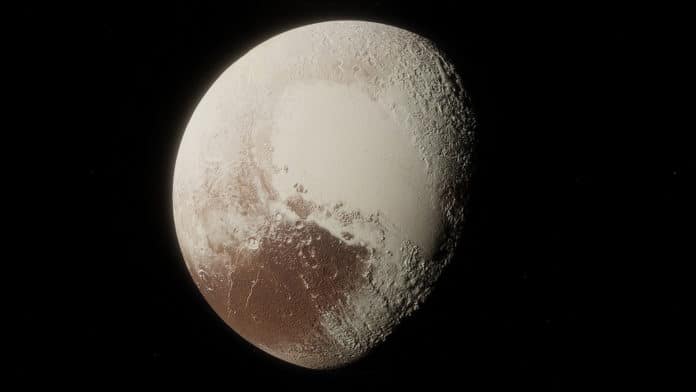Despite being demoted as a dwarf planet in 2006, Pluto remains the point of attraction for astronomers. It has high obliquity (120°) and orbital eccentricity (0.25). The planet is known to experience seasonal episodes because of large depression on Pluto, known as Sputnik Planitia.
Pluto’s poles remain, for decades, in permanent sunlight or darkness over its 248-year long orbital period. It causes strong effects on its Nitrogen atmosphere.
Pluto’s atmosphere is mainly controlled by vapor pressure equilibrium with the surface Nitrogen ice. Moreover, as Pluto is now moving away from the Galactic plane, stellar occultations by the dwarf planet are becoming increasingly rare, making this event a decisive one.
A stellar occultation by Pluto was observed on 2020 June 6. For this, astronomers used the 3.6-m Devasthal optical telescope (DOT) (India’s largest optical telescope) and 1.3-m Devasthal Fast Optical Telescope (DFOT) telescopes located at Devasthal, Nainital.
Using data obtained from the occultation, a team of scientists, including Indian and International collaborators, derived a surface pressure for Pluto’s atmosphere. They calculated the accurate value of Pluto’s atmospheric pressure at its surface. They also found that the pressure at the surface is close to the seasonal peak of Pluto.
The team found that atmospheric pressure on the surface of Pluto is more than 80,000 times less than Earth. For this, they used signal-to-noise ratio light curves obtained from the sophisticated instruments used in the observations.
Their study suggests that Pluto’s atmosphere has been in a plateau phase since mid-2015. This is in excellent agreement with the model values calculated earlier by the Pluto volatile transport model in 2019.
Scientists noted, “This occultation was particularly timely as it can test the validity of the current models of Pluto’s atmosphere evolution.”
A stellar occultation occurs when, as viewed from Earth, a bright star passes behind a planetary ring system. These events occur rarely, typically last for hours, and can yield data on the location of ring features that rival spacecraft resolutions.
Journal Reference:
- Bruno Sicardy et al. Pluto’s Atmosphere in Plateau Phase Since 2015 from a Stellar Occultation at Devasthal. DOI: 10.3847/2041-8213/ac4249
